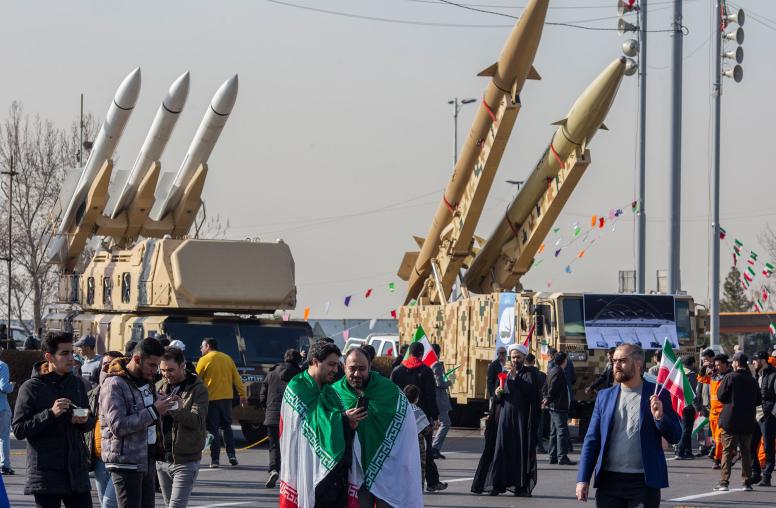After G-20, Amid Unprecedented Protests: Where Do U.S.-China Relations Stand?
The Biden-Xi meeting in Bali indicates that ties will be defined by dialogue, not détente and contact, not cooperation.
U.S. President Joe Biden and Chinese Communist Party General Secretary Xi Jinping met earlier this month on the sidelines of the G-20 gathering in Bali and came away with seemingly little to show for the gesture. Those hoping for a major reset in the U.S.-China relationship from the first face-to-face meeting between Biden and Xi held were surely disappointed, with no signs of an emerging détente between Washington and Beijing visible.

In opening remarks at the G-20 summit, Indonesian President Joko Widodo urged world leaders to be “responsible” while warning it was "not the time to create a new tension that disturbs the global recovery." Media reporting and American and Chinese readouts from the meeting suggest that Biden and Xi’s tête-à-tête succeeded not only in preventing new bilateral tensions from emerging but the two sides appear to have agreed to pursue a steadier state for U.S.-China relations. However, the meeting did not appear to move the dial on any of the issues that are the most acute, even combustible sources of bilateral friction — Taiwan, trade, technology and human rights.
Biden and Xi Briefly Riding High in Bali
When Biden and Xi met at the G-20, the political cost to the two leaders of a mutual display of good will was marginally low. Both men were celebrating personal political victories. Biden had helped galvanize prediction-defying outcomes in U.S. midterm elections, preserving his party’s leadership of the Senate. For his part, Xi emerged from the 20th Congress of the Chinese Communist Party with a concentration of power akin to that of China’s ruthless first post-1949 dictator, Mao Zedong.
So emboldened, amid incentives for improved U.S.-China coordination such as global economic recovery, progress on climate change and mitigating other threats like North Korea’s nuclear program, Biden and Xi appeared receptive to reviving routine diplomatic engagement at a minimum. In an atmosphere of less volatile and more constructive bilateral diplomacy, even some modicum of collaboration on issues of global concern — as exemplified by the decision to allow the two countries’ climate envoys to hold informal talks at COP27 — seemed conceivable.
However, the widespread demonstrations in China protesting the sustained COVID-19 lockdown have already changed the picture. Xi returned to Beijing from his stint of maskless diplomacy in Asia, accompanied by images of his wife Peng Liyuan’s 60th birthday celebration in Bangkok, to a populace fraught with dissatisfaction and anger. Protesters went so far as to voice frustrations with Xi’s draconian zero COVID crackdown amid calls for him to step down. Suppression of protests was almost immediate even as China’s central authorities have sought to defuse the unrest by hinting that some COVID restrictions might be lifted.
Although the White House has expressed its hope that the United States and China will be able to reopen and even expand the working-level channels of communication discussed at the Biden-Xi meeting, it has made clear that it will be watching how Chinese authorities respond to the protests.
COVID Protests Could Scuttle Engagement
Whether the protests persist and spread, or China’s protesters are cowed and beaten into submission, Xi and his fellow Politburo Standing Committee members are almost certainly alarmed and will read the remarkable display of collective dissent in cities across China as planned, well-organized and part of a nationwide, anti-party conspiracy, posing an existential threat to the regime. Moreover, they will be inclined to believe that other countries, notably the United States, have directed, orchestrated or at least inspired Chinese citizens’ actions. It will not matter that these public expressions of anger and outrage appear to be largely spontaneous, uncoordinated and localized — albeit triggered by news of the tragedy in Urumqi and/or inspired by word of protests in other cities.
Consequently, the response by authorities will be harsh and unyielding. Moreover, confronting such domestic upheaval, Chinese diplomats probably won’t be inclined to engage in good-faith negotiations with counterparts from a country they strongly suspect of actively working to undermine the regime. A crackdown in China will also further intensify U.S. concerns about the implications of China’s growing international influence for the spread of authoritarianism, as well as focus more U.S. attention on China’s ambitions to extend its political control to Taiwan.
It will certainly spur forward and perhaps proliferate legislative initiatives underway in the U.S. Congress aimed at countering China’s influence and coercive capabilities, including toward Taiwan such as those in the Taiwan Policy Act and in the Taiwan bill under debate in the House of Representatives. Beijing has made clear that Taiwan is the core of its core national interests and any expansion of U.S. commitments to Taiwan will inflame Beijing, convinced that the United States is intent on securing independence for Taiwan, despite Washington’s stated one China policy.
Given the abysmal overall climate of U.S.-China relations, it may not take much to derail the willingness to expand dialogue that Biden and Xi conveyed at the G-20. Contact does not automatically translate into cooperation even in the best of times; contact leading to meaningful cooperation in late 2022, while not impossible, seems a stretch. Neither side seems in the mood to compromise. This tees up the specter of a resurgence of U.S.-China tensions with the real potential to put the relationship on a trajectory toward the high-risk zone where the specter of military conflict looms.



